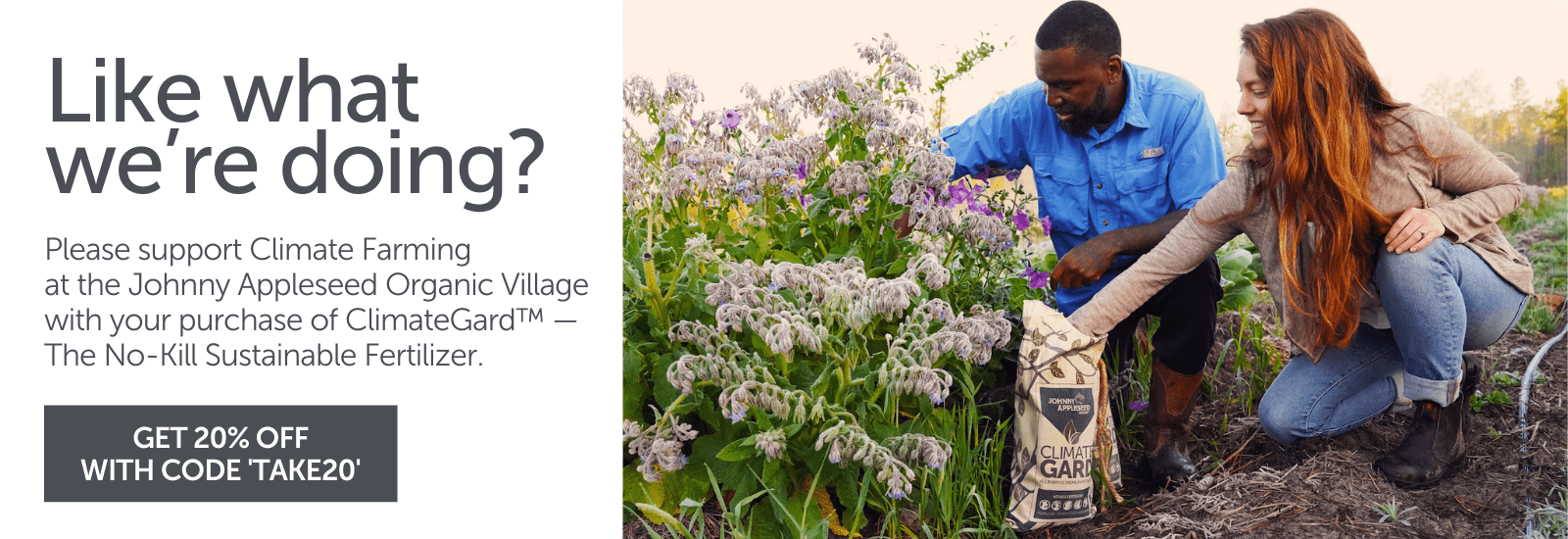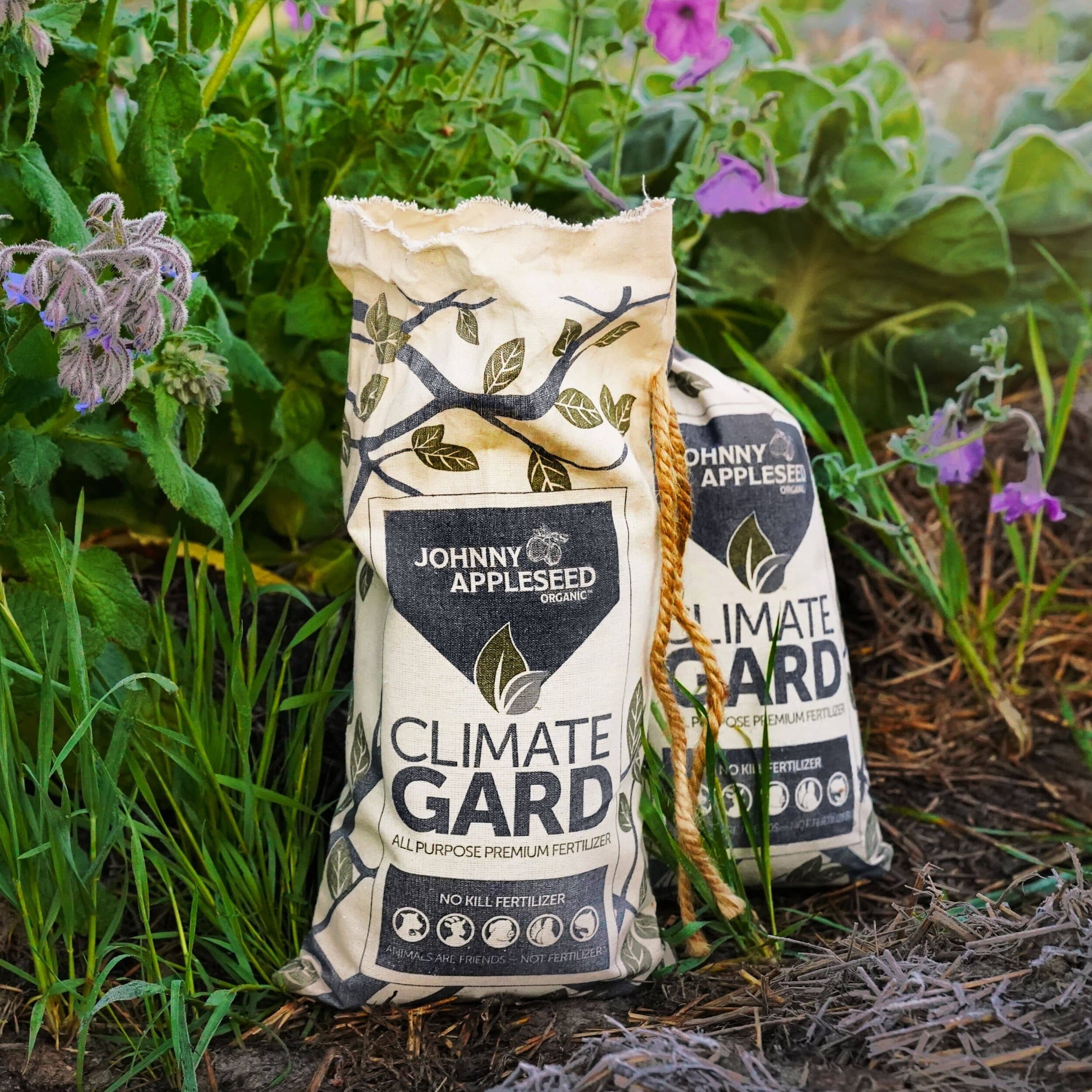Meishan Pigs and Chickens in a Rotational Cell Grazing System
By Mikael Maynard
Rotational cell grazing is a method of animal husbandry that involves moving animals from one paddock or cell to another based on the vegetative growth of the plants within the cells. Plants are only grazed for short periods of time, which eliminates the overgrazing and compaction that is prevalent on continuous grazing systems. This method also allows for previously-foraged crops to regrow during the time animals rotate through each sequence of cells, to ultimately end up back at the beginning in an area with lush vegetation.
Meishan pigs are an integral part of our rotational cell grazing system at the Johnny Appleseed Organic Village. Working alongside our chickens, they help us regenerate the mismanaged soil left behind by the timber operations which previously took place on our land. The Meishan pigs do this by tilling, aerating and making nutrients and minerals more bioavailable to our plants through their natural forage, digestion and waste-dropping behaviors.
This method of regenerative farming with animals does require some infrastructure, both for proper performance and to ensure the animals live in the most humane conditions possible. Our setup includes electric fencing, a shelter for the animals and an easily-accessible source of water for the animals.
Dividing Animals into Cells
We currently have three separate cells of animals rotating through our farm rows. Here is a summary of the requirements for each of these cells, how often we move them: and what we feed them.
Cell #1 - 30 adult mixed-breed chickens and one 5-month-old Meishan boar
Fencing: For this consortium of animals we use two, 100ft solar powered electrified poultry nets from Premier 1. This fence helps us funnel them into their next cell, and most importantly, helps keep the animals safe from predators.
Chicken shelter: The chicken shelter is a moveable structure on an axle with wheels called a “chickshaw.” We have made some modifications to this shelter since discovering our boar was able to get inside (imagine our surprise when we found a hole in the floor of it!). To keep him from getting in, we attached a piece of wood through the center of the entrance so only chickens could enter. We then had to further modify this addition by putting a few pieces of wood that run perpendicular to the horizontal bar, preventing the chickens from roosting on it at night.
Boar shelter: Big Boy’s temporary shelter is an IBC tote with the top cut off, which we filled with hay. We will eventually build him one like we built for the sows (more on that in a moment).
Water source: Water is provided by a 275 gallon IBC tote that sits up on stilts. We load and unload the tote with the forks of our tractor, which we can easily move as the animals rotate through the rows. It’s nice to have an abundant supply of water close by so we can refill Big Boy’s water bowl (that the chickens have also adopted) without having to lug heavy buckets of water.
Pig Food: The chickens and Big Boy are currently being moved between farm rows planted with a cover crop of oats and daikon radish. Both the chickens and the boar forage on the cover crop as well as whatever weedy or volunteer species may be growing nearby. We have noticed that Meishan pigs seem to prefer the oats over daikon leaves, but will still eat their fair share of daikon! On top of foraging in their paddock, we supply them with supplemental feed once a day. This currently consists of Nature's Best Organic Feeds - Organic 16% mini adult pig pellets. He gets about 1.5 gallons of the supplemental feed per day.
Chicken food: Organic egg layer crumble and organic scratch grain applied directly to the tree rows to encourage tilling action.
Move frequency: Once a week. This move is determined by the pressure that has been put on the pasture, so their stay may be shorter or longer depending on the state of the vegetation and the pressure expressed on the land.
You may be wondering why we have our boar and sows separated — and why we chose to mix our boar with chickens. The first is easy to answer: The pigs are separated because Meishans reach reproductive maturity rather quickly, and we are not ready to have a large litter of piglets running around yet!
As for Big Boy’s cellmates, we chose to put our boar with our oldest chicken flock because Meishans are known for being a docile breed that isn’t aggressive towards other animals. Out of an abundance of caution, however, we decided to test this theory on our bigger chickens first. Because he is young, Big Boy does sometimes chase the chickens for fun, but unlike other breeds of pig, he has never attacked or tried to eat our chickens.
On top of that, there is a beneficial relationship between chickens and pigs that is helpful to the environmentally-conscious Climate Farmer. The chickens help to suppress parasites through their natural scratching and bug-eating instincts. They will scratch the pig manure and eat the bugs it attracts, tilling the manure into the soil in the process and making it less likely to pile up and go anaerobic.
Chickens and pigs also have very different foraging manners. Pigs will root and loosen up the soil, which gives the chickens greater access to insects — as well as dust bathing opportunities!
With that being said, let’s move on to cells 2 and 3.
Cell #2 - 3 Meishan sows
Fencing: We use a 100ft solar powered electrified pig quik fence from Premier 1.
Shelter: Our lady pigs have a three-walled shelter that was hand-built by our farm manager. He designed the shelter to fit in the back of his truck when we initially went to pick up the pigs, so it serves two dual roles as a sedentary shelter and a transport shelter.
Water source: We keep the aforementioned IBC tote in between Cell #1 and #2 so that the water is also easily accessible for the sows as well.
Food: Pasture foraging on daikon, oats and native species, as well as food scraps. We also supply them with supplemental feed once a day. We are currently using Nature’s Best Organic Feeds - Organic 16% mini adult pig pellets. They get about 4.5 gallons of the supplemental feed per day.
Move frequency: The ladies are moved three times a week, since they put a lot more pressure on the land than the consortium in cell #1.
Cell #3 - 50 Rhode Island red pullets
Fencing: We use a 100ft solar powered electrified pig quik fence from Premier 1.
Shelter: The chicken shelter is a moveable structure on an axle with wheels called a “chickshaw.”
Water source: We rinse, clean and refill their 3 gallon waterer at our farm warehouse and use our side-by-side to haul it back and forth.
Food: Forage on pasture, currently consisting of daikon radish, oats and insects. We also supplement their feed with organic scratch grain and organic egg layer crumble.
Move frequency: Once a week as dictated by pasture health.
Moving Animals in a Cell Grazing System
So, what does an actual day of moving these animals through the system look like?
Imagine that the chickens are locked in their chickshaw, while the pigs are awake, moving around and excited for all the action.
Before we move the pigs to their next paddock, we set up a new paddock on the new pasture. This starts by having someone brush-cut the perimeter of the paddock where another set of fencing will go. This step is important because you don’t want plants to touch the electric fence as it will ground the current and make it less of a barrier for the animals you are trying to keep in (or intruders you are trying to keep out). Then, we erect a new set of electric fencing within the brush-cut area (although we use 2 sets of electric fencing, there is just 1 energizer, because it can be moved between them).
We unhook the fencing that the animals are currently in from the energizer and use that fence in conjunction with another electric fence to create a funnel that easily guides the pigs into the next paddock. Then, we close it and hook it up to the solar energizer.
Moving the electric fencing is the trickiest part of this whole process. We highly recommend having at least two people to pick up and lay out the electric fence because it is big, bulky and can get tangled very easily.
Conclusion
We are still learning and modifying these systems to become as efficient as possible. If you have any questions or experience that you would like to lend, we would love to hear what you have to say.
Otherwise, good luck and happy gardening!
Subscribe to Newsletter
Follow Us on Social
Cutting-edge microbiology
No kill formula
Superior plant nutrition derived from the most ethical, sustainable sources available.
Produces the same results as conventional fertilizers without the negative environmental impacts.
Each ClimateGard pellet is infused with micronutrients, silicon, humic acid and a high-performance blend of living bacteria and fungi.
Delivered in an environmentally friendly organic cotton bag with a compostable inner liner.
Will continue to enrich your soil long after application.
$39.95 for 7.5 pound bag | $69.95 for 15 pound bag.





